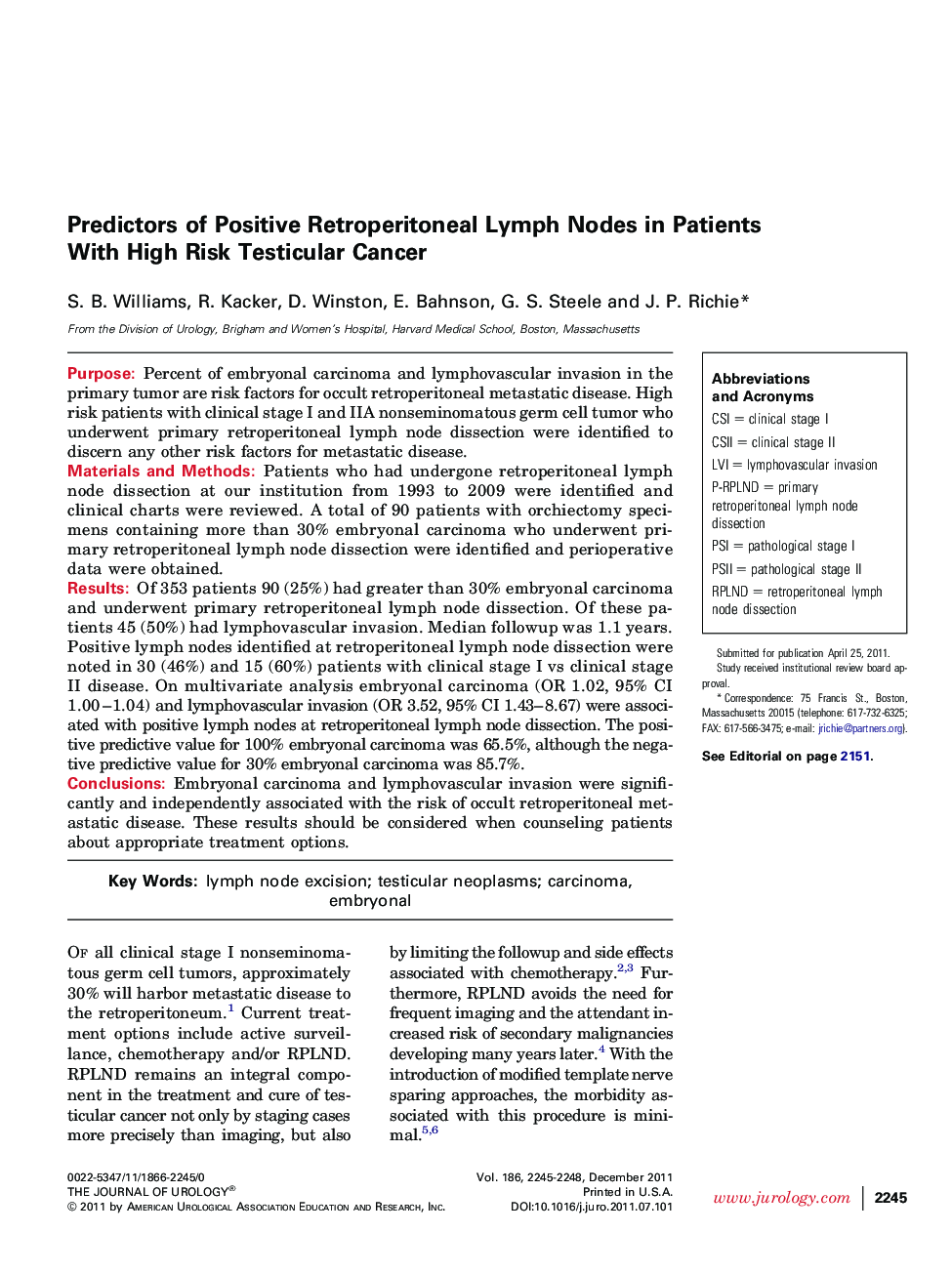| Article ID | Journal | Published Year | Pages | File Type |
|---|---|---|---|---|
| 3870226 | The Journal of Urology | 2011 | 4 Pages |
PurposePercent of embryonal carcinoma and lymphovascular invasion in the primary tumor are risk factors for occult retroperitoneal metastatic disease. High risk patients with clinical stage I and IIA nonseminomatous germ cell tumor who underwent primary retroperitoneal lymph node dissection were identified to discern any other risk factors for metastatic disease.Materials and MethodsPatients who had undergone retroperitoneal lymph node dissection at our institution from 1993 to 2009 were identified and clinical charts were reviewed. A total of 90 patients with orchiectomy specimens containing more than 30% embryonal carcinoma who underwent primary retroperitoneal lymph node dissection were identified and perioperative data were obtained.ResultsOf 353 patients 90 (25%) had greater than 30% embryonal carcinoma and underwent primary retroperitoneal lymph node dissection. Of these patients 45 (50%) had lymphovascular invasion. Median followup was 1.1 years. Positive lymph nodes identified at retroperitoneal lymph node dissection were noted in 30 (46%) and 15 (60%) patients with clinical stage I vs clinical stage II disease. On multivariate analysis embryonal carcinoma (OR 1.02, 95% CI 1.00–1.04) and lymphovascular invasion (OR 3.52, 95% CI 1.43–8.67) were associated with positive lymph nodes at retroperitoneal lymph node dissection. The positive predictive value for 100% embryonal carcinoma was 65.5%, although the negative predictive value for 30% embryonal carcinoma was 85.7%.ConclusionsEmbryonal carcinoma and lymphovascular invasion were significantly and independently associated with the risk of occult retroperitoneal metastatic disease. These results should be considered when counseling patients about appropriate treatment options.
